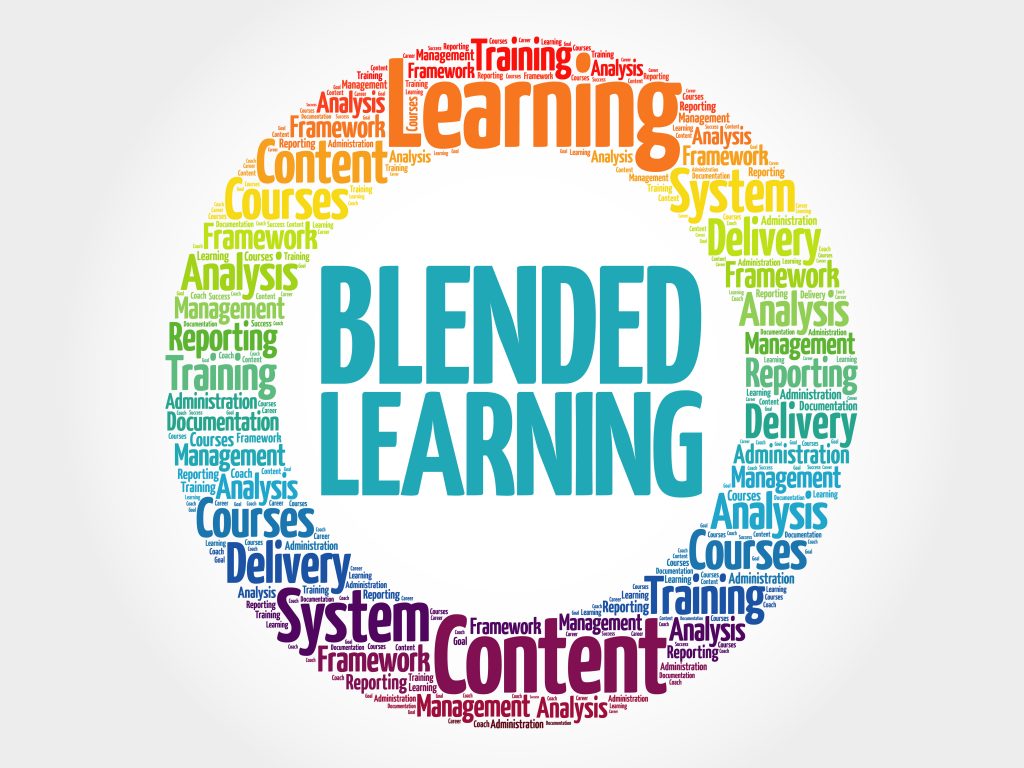
This blog series looks at the learning principles behind blended learning, the needs of the audience and how these are determined, the technologies available and combining all these aspects together.
The term blended learning has been bandied about for just about as long as I can remember during my 20 odd years in the training and eLearning industries. In those years I have seen very few examples of either actual blended courses or successfully blended courses. It would seem that to a large extent the people who make the decisions that broadly invest in the advancement of training via technology, do so based on the limited understanding of industry or technology buzz words rather than taking the time understand the true meaning of those terms and their implications.
When I first started down my own eLearning pathway, online training content was only in its infancy in corporate Australia and the immediate reaction of the visionaries of the day seemed to be that the online content being built would be most useful in reducing L&D (trainer) headcount, rather than providing Just in Time or for the delivery of widely accessible, suitably standardised information. Not to mention the seeming lack of any decent instructional or graphic design thought being put into those courses. The idea that if you provided something via a computer screen it automatically becomes a robust and desirable solution prevailed, and still continues to as we will see.
The next link in the chain was all about the incorporation of “Social Media” into the online content sphere and it was from this excursion into the integration of technologies that the requirement for blended learning, indeed the insistence on blended learning, started to appear in RFQ’s and tender documents. Again the time taken to understand the requirements, limitations, strengths and advantages of the new social technologies was insufficient or non-existent. People obviously understood the power and reach social media and learning providers/entrepreneurs saw it as a way to differentiate their products and services. And the industry followed, possibly because no one wanted to appear ignorant of technology based jargon whilst collecting merchandising at trade shows and also because so many still subscribed to the “It’s on a computer and it’s also an internet “thing” how could it not be good” philosophy.
Shifting forward now to the modern world where those catch cries and learning fads of the past, that have weathered the storm of training reality and are now increasingly finding a learner centric place in the pantheon to eLearning capability thanks to businesses like B Online Learning and other small providers who care more for the outcome than the headline.
Let’s clearly define what blended learning is and how it should work, then we can move on to look at the keys to getting a blended program that delivers.
In a nutshell blended learning is learning that uses multiple delivery channels to provide the learner with training in a specific topic. The channels used in blended learning can consist of but are not limited to:
- eLearning content
- Interactive online content consisting of text, narration, media, interactions and quizzes
- Face to Face
- Classroom training
- Mentoring and Coaching
- Workshops
- Skills assessment
- Webinars
- Live or recorded
- Presentation style or Interactive style
- Downloadable resources
- Documents
- Media
- Programs
- Social media interactions
- Online forums
- Blogs
- Chat and/or collaboration rooms
- On the job training
We can see from the above list, which is by no means comprehensive, the numbers of options we have for delivering training down multiple channels is considerable. In reality if we combine any two of these channels in the one course we have achieved a “Blended” course just building a blended course does not make it good. In order to achieve a successful blended learning course or program our initial thoughts, our planning, our delivery and our review of the course or program should all focus on one aspect of that program, the learner. In fact the key ingredient to any training solution, blended or otherwise, is the learner.
The perfect example of a successful ‘Blended Online’ learning model is B Online Learning’s Master eLearning Course, now in it’s 7th year. We use a variety of learning methods combined with assessment strategies. There are 2 key differentiators to other online providers with our approach.
- Human touch. Our students participate in live events, are in weekly communication with their assigned learning coach via phone and email and also communicate daily with their peers through our social networking tool.
- Flexibility. This isn’t a one size fits all model. We cater for the individuals needs by being flexible with our live event scheduling, providing additional live events suited to the time slot or time.
The success or failure of any blended training really does come down to the training, at the very least, meeting the direct needs of the learner. These needs can be many and varied and in order to produce the best possible blended program they must be analysed and understood. In the next post in this series, we will look at how we can group and identify these needs as well as looking at a case study on how we can apply the findings of our analysis.
You may also like – Who is the blended learner?
